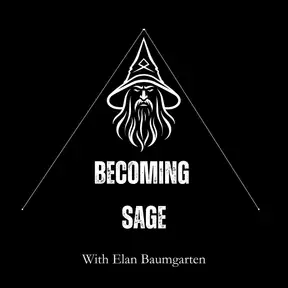
Cracking Open the Can of History
Welcome back to Becoming Sage, where the ordinary becomes extraordinary! This is Elan Baumgarten, and today we are taking a look at one of history’s best food storage and preservative inventions - the can. But first, we have to look at why we needed to invent the can. There are many other ways of preserving food: pickling, drying, curing, salting, smoking, and the list goes on. What’s important is that many were a long, sometimes expensive, process. They were also unreliably safe and didn’t preserve the flavor of the food over any long period of time. This is why the French Napoleonic Army offered up 12,000 francs to anyone who could devise a method of food storage safe and cheap enough for their army. Nicolas Appert, the father of Canning, received his prize after spending 14 years developing the can. He placed food in jars, then heated them up to kill bacteria inside. As the jars cooled off from the intense heat exposure, the food was sealed inside. After many years experimenting, Appert concluded that the reason his system worked was due to two key factors: the first was that he deprived food from outside air contact. This meant that no new bacterias could find their way onto the food. The other factor was that he heated them up - killing bacterias. The French Navy took his methods and tested them - finding success in all kinds of food from meat, vegetables, fruit, and even milk. He would then receive his prize money, and later publish a book on the canning and preservation of foods. His discoveries and experimentation might seem basic and obvious now, but it is important to remember that people didn’t always know microorganisms could cause food to go bad. In fact, it took years to discover this connection. Appert wasn’t the only canner of his time. Peter Durand, an Englishman, received a patent for the tin can in 1810, the same year that Appert published his findings. But back to the microorganisms. It was Louis Pasteur who experimented with the relationship between food expiration and microorganisms, and decades later his name would go down in history - memorialized in the word pasteurization. Pasteurization is a simple process in which foods, typically liquids like milk or juice, are heated to kill off bacterias. That’s why most milk in stores is pasteurized, heated to make it safe to consume. Now you might be wondering how people opened Peter Durand’s tin cans, and the answer for over 50 years is not what you might think. Can Openers weren’t invented until 1858, and before that people just bashed them open with a hammer and chisel. Before the Industrial Revolution kicked off this wasn’t really a problem - one person could only make a handful of them an hour. More of a novelty item one might say. But people started to take these cans more seriously after a few decades. That’s when the American, Ezra Warner, invented the can opener. At the same time, people started switching to thinner steel cans. Durand’s could be impressively thick, making them more expensive, heavier to carry, and far harder to open. Ezra’s design was a crude one, more of a saw blade with a guard than anything else. It was rarely used publicly. The US Army used them during the American Civil War, and some grocers would open cans for you when you bought them. A couple decades later in 1870 a new design reached the markets. William Lyman invented this one, and it contained a rotating blade that, unlike the previous design, didn’t leave jagged edges along the interior rim of the can. It was still pretty alien to what we use today though. If you are looking for the first modern can opener, you should head directly to the 1920s where Charles Bunker came up with the classic design, a toothed wheel with a crank if you will. Today we have many different kinds of cans, and the ones that store drinks don’t look like the ones that store soup. So what about a beverage can? Well the first one came from Virginia in 1935. Krueger Cream Ale was sold in a can, the first beer to be sold in such a manner. It looked like the other cans though. It was in 1959 that a pop-top can was first invented by Ermal Fraze. Today, many food cans use these pop-tops - as well as just about every drink you can find. Today, there is something special about the aluminium can that needs to be recognized. It has a closed recycling cycle - that means that you can turn a recycled aluminium can into another can, and another can, and another can, forever. This isn’t something you can say about other materials like plastic bottles. Unfortunately, the United States alone threw away roughly 61 billion cans in 2023. That’s over a billion dollars in cans that ended up in a landfill, never to be used again. If that number doesn’t seem like a lot, then think about it in these terms: that is about 15 12-packs every year for every person in the United States: man, woman, and child. All in a landfill, never to be a can again. Do you like cans, or do you prefer something else like boxed liquids or glass bottles? Let us know at sagebecoming@gmail.com. Thank you for joining us on this episode of Becoming Sage, a place where the ordinary becomes extraordinary through the examination of the interesting histories and origins of our episodes’ subjects. My name is Elan Baumgarten, and this was “Cracking Open the Can of History”, the origins of the can, by Becoming Sage.
